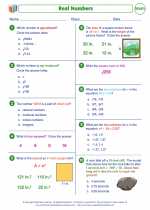Domain and Range Study Guide
What is Domain and Range?
Domain: The domain of a function is the set of all possible input values (x-values) for which the function is defined. It is the set of all x-values for which the function is meaningful.
Range: The range of a function is the set of all possible output values (y-values) that the function can produce based on its input values. It is the set of all y-values that the function can produce.
Finding the Domain and Range
To find the domain of a function, look for any restrictions on the input values. This may include restrictions on the denominator of a fraction, restrictions on the square root of a number, or restrictions on the values inside a logarithm or trigonometric function.
To find the range of a function, consider the output values that the function can produce based on the input values. This may involve analyzing the behavior of the function, finding the maximum and minimum values, and determining any restrictions on the output values.
Examples
Example 1: Find the domain and range of the function f(x) = x^2.
Solution: The domain of f(x) = x^2 is all real numbers because there are no restrictions on the input values. The range of f(x) = x^2 is all non-negative real numbers (i.e., y ≥ 0) because the function always produces non-negative output values.
Example 2: Find the domain and range of the function g(x) = 1/x.
Solution: The domain of g(x) = 1/x is all real numbers except x = 0 because the function is undefined at x = 0. The range of g(x) = 1/x is all real numbers except y = 0 because the function never produces an output of 0.
Summary
In summary, the domain of a function represents all the possible input values for which the function is defined, while the range represents all the possible output values that the function can produce based on its input values.
.◂Math Worksheets and Study Guides Eighth Grade. Real numbers
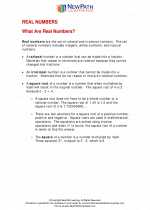
 Worksheet/Answer key
Worksheet/Answer key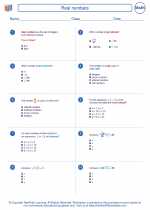
 Worksheet/Answer key
Worksheet/Answer key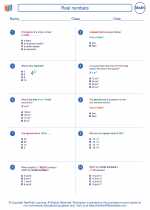
 Worksheet/Answer key
Worksheet/Answer key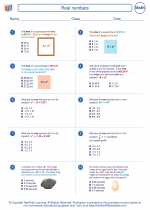
 Worksheet/Answer key
Worksheet/Answer key